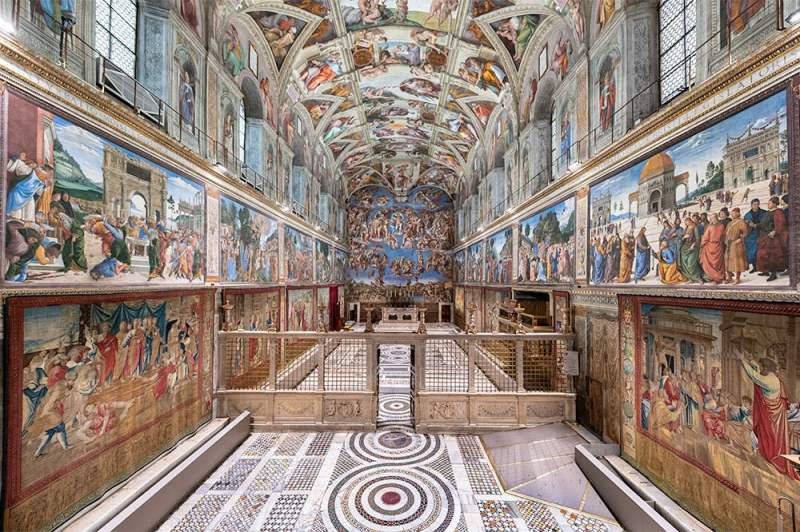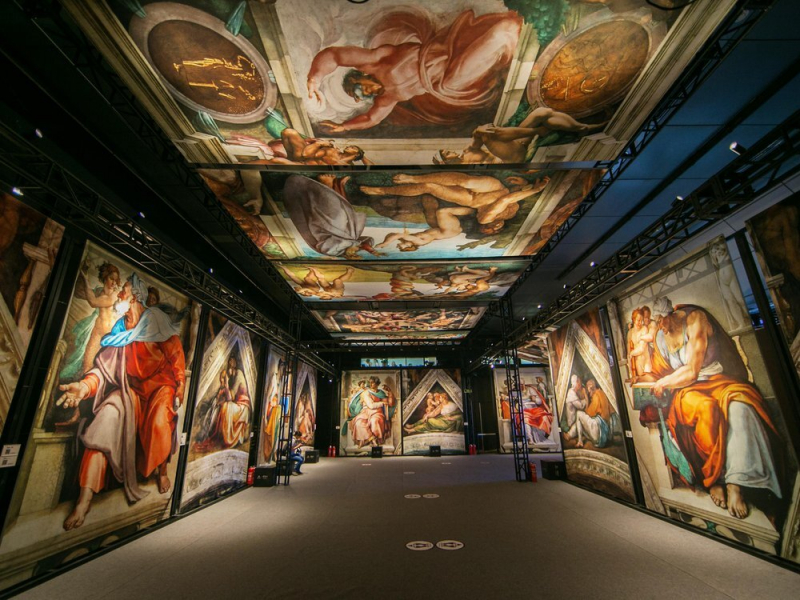Sistine Chapel
The Sistine Chapel is a papal chapel in the Vatican Palace that was built for Pope Sixtus IV in 1473–81 by the architect Giovanni dei Dolci (hence its name). It is known for Michelangelo's Renaissance frescoes.
The Sistine Chapel is a rectangular brick structure with a barrel-vaulted roof and six arched windows on each of the two major (or side) walls. The chapel's facade is plain and unadorned, but its inner walls and ceiling are covered in murals by a number of Florentine Renaissance artists.
The murals that fully cover the walls and ceiling of the Sistine Chapel are what attract visitors' attention, not the architecture. Michelangelo's murals on the ceiling and the west wall behind the altar are the most noteworthy artworks in the chapel. Pope Julius II commissioned the ceiling frescoes, generally known as the Sistine Ceiling, in 1508, and Michelangelo painted them between 1508 and 1512. They are based on Old Testament events and characters. Michelangelo created the Last Judgment fresco on the west wall for Pope Paul III between 1534 and 1541. These two massive frescoes are among the most important works of Western art.
The Sistine Chapel now serves as the conclave's meeting place. When a new Pope is elected, the cardinals convene in the Sistine Chapel to select their successor, surrounded by Michelangelo's magnificent artwork. Knowing what decisions were taken in the same place where you will be standing when you see the Sistine Chapel is a fascinating experience.
Located in: Vatican Museums






